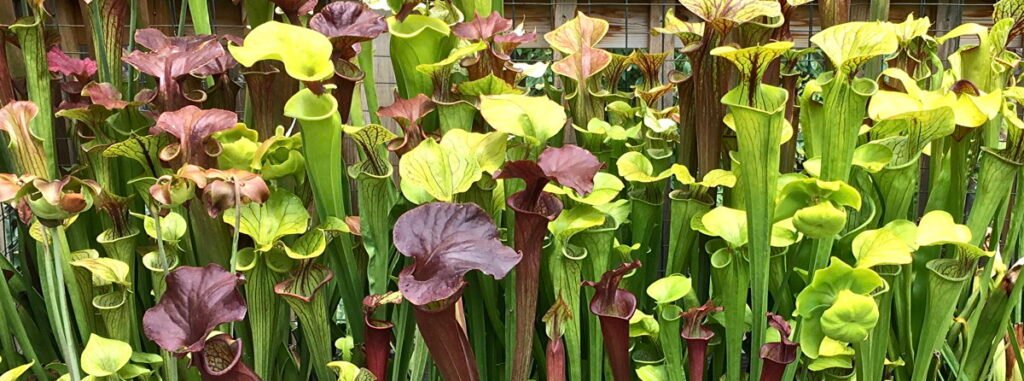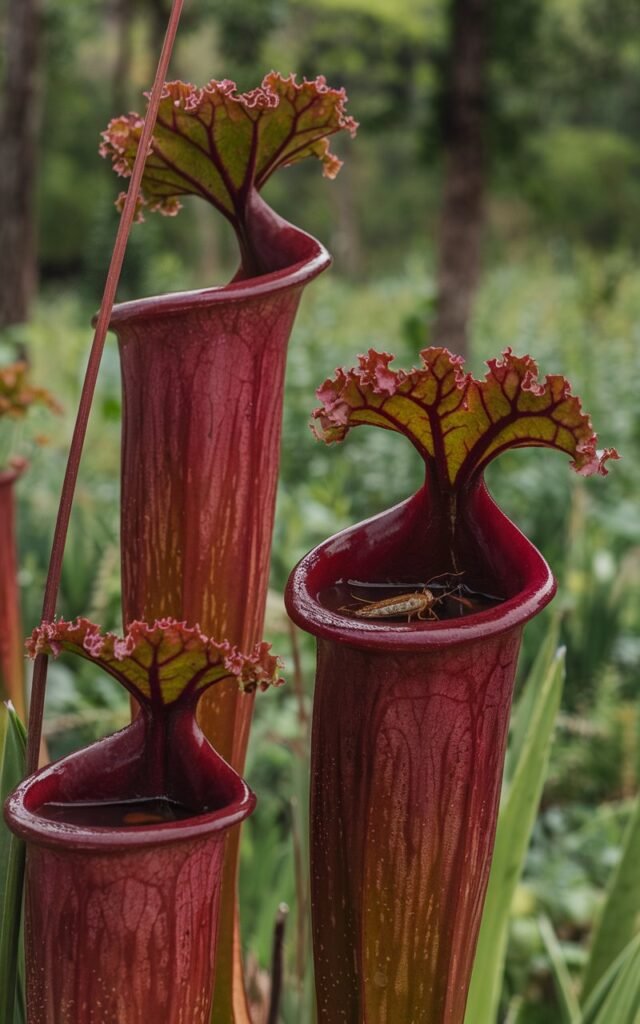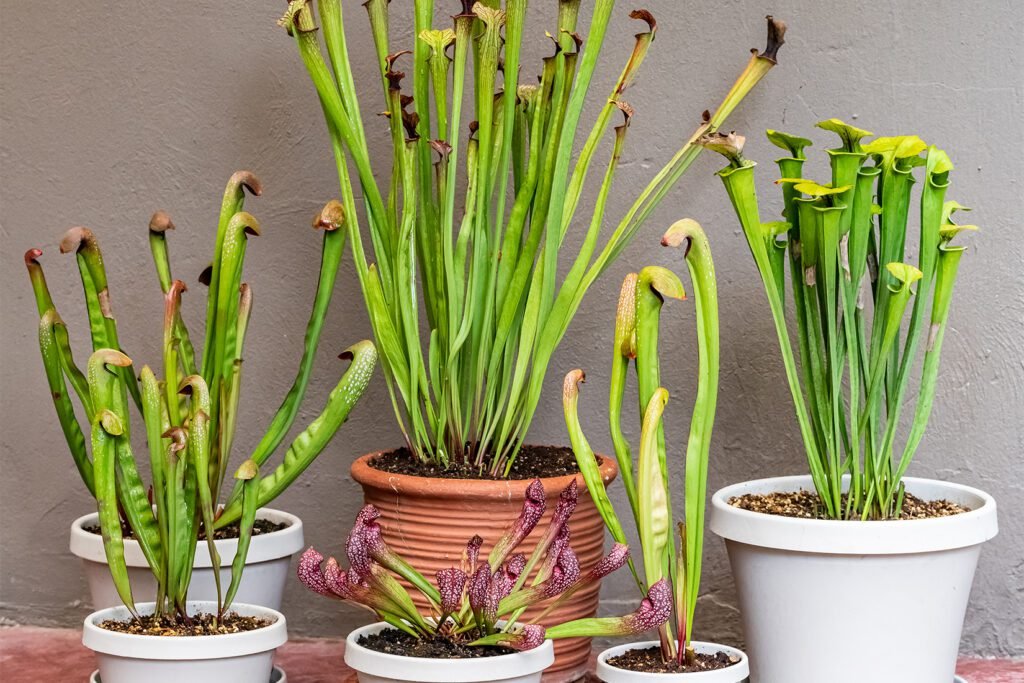Discover the unique Sarracenia plant, a carnivorous wonder. Learn about its characteristics, care requirements and how to grow these intriguing pitcher plants at home.
Sarracenia, commonly known as pitcher plants, are fascinating carnivorous plants that capture the imagination of both casual observers and dedicated horticulturists. This article will delve into the world of Sarracenia, exploring their unique features, care requirements and how you can grow these remarkable plants.
What is Sarracenia?

Sarracenia is a genus of carnivorous plants native to North America. These plants are known for their distinctive pitcher-shaped leaves that trap and digest insects.
Key characteristics:
- Hollow, pitcher-shaped leaves
- Vibrant colors ranging from green to red and purple
- Ability to attract and digest insects for nutrients
Types of Sarracenia

There are several species of Sarracenia, each with unique characteristics:
- Sarracenia purpurea (Purple Pitcher Plant)
- Sarracenia flava (Yellow Trumpet)
- Sarracenia leucophylla (White Trumpet)
- Sarracenia psittacina (Parrot Pitcher Plant)
- Sarracenia minor (Hooded Pitcher Plant)
Learn more about Sarracenia species and their unique traits
How Sarracenia Traps Insects

Sarracenia plants use a passive trapping mechanism:
- Attractive colors and nectar lure insects
- Slippery interior surface causes insects to fall into the pitcher
- Downward-pointing hairs prevent escape
- Digestive enzymes break down the prey
Growing Sarracenia at Home
Sarracenia can be grown as unique houseplants or outdoor specimens. Here’s how to care for them:

Light Requirements
- Full sun to partial shade
- At least 6 hours of direct sunlight daily
Water and Soil
- Use distilled water or rainwater
- Keep soil consistently moist
- Plant in a mix of sphagnum moss and perlite
Temperature and Humidity
- Prefer temperatures between 70-80°F (21-27°C)
- Can tolerate brief periods of frost
- High humidity is beneficial
Feeding
- Do not fertilize; insects provide necessary nutrients
- Can supplement with diluted fertilizer if grown indoors
Detailed guide on Sarracenia care
Propagation Methods
Sarracenia can be propagated through:
- Seed sowing
- Rhizome division
- Leaf cuttings
Common Problems and Solutions
- Browning leaves: Often due to low humidity or hard water
- Lack of pitchers: Insufficient light or dormancy period
- Pest issues: Aphids can be a problem; treat with insecticidal soap
Sarracenia in Their Natural Habitat
In the wild, Sarracenia are found in:
- Bogs and swamps
- Nutrient-poor soils
- Areas with high rainfall
Explore Sarracenia conservation efforts
Interesting Facts About Sarracenia
- Some species can digest small vertebrates like frogs
- Native Americans used Sarracenia for medicinal purposes
- The largest species can grow pitchers over 3 feet tall
Sarracenia pitcher plants are captivating carnivorous plants that offer a unique addition to any plant collection. With their striking appearance and fascinating feeding habits, they provide both beauty and intrigue. By understanding their specific care requirements, you can successfully grow these remarkable plants and enjoy their distinctive charm in your own home or garden.
Whether you’re a seasoned plant enthusiast or a curious beginner, Sarracenia offers an exciting opportunity to explore the world of carnivorous plants. Happy growing!
Discover more about carnivorous plants and their care